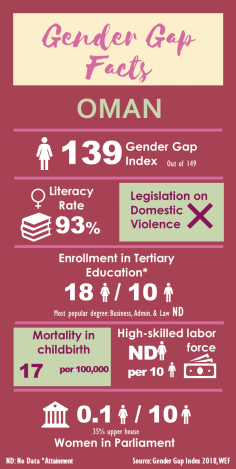This unexpected trip itself bonded us in some hidden but really profound way. The trip was the strong rope that tied us together and would yank us out of the dream and nightmare both, at the same time. It freed us from the idea that returning was impossible or unreal. It made returning into something you could actually do, something likely, and -we suspected then – permanent, too. Ghaliya paid for our liberation with her death. There had to be an offering, a sacrifice. A bridge across which my father walked, and we followed, to Oman.
Al-Harthi tells the story of a changing Oman through the life of three sisters: Mayya, Asma and Khwala. But also through the life of their parents, husbands, neighbors, servants, aunts, uncles, kids and lovers. It’s a family saga, in a context where the definition of family is broader.
Besides being an endearing story of love and loss, this book is remarkable for many reasons. It is brilliantly written; I was transported to rural Oman in the 60s and 70s, I could feel what the characters were feeling and, really, some passages are simply dreamlike. But what I liked the most was the structure. Told in fragments, alternating between an omniscient narrator -that talks from the perspective of a different character in each chapter- and Abdahllah, Mayya’s husband. The chapters from Abdahllah’s perspective are his memories, so they do not follow a chronological order and take place in a longer time frame than the rest of the story. He remembers the death of his father, the marriage of his daughter, his childhood… While the chapters of the omniscient narrator have a linear order, starting with the marriage of Mayya and ending with the marriage Khawla. Since the narrator talks from such different perspectives, in combination with Abdahlla’s story, I felt like I was solving a puzzle and that every page was a piece that let me understand their world from a wider perspective.
While reading Celestial Bodies, I had to read a bit about Oman and its history because I couldn’t believe that the historical events that were happening in the book actually happened: slavery was abolished in 1970, almost all the population was uneducated, there were only a couple of hospitals in the entire country (all located in Muscat) and women were confined to their homes. A few decades later Oman turned into a highly developed country, where virtually everyone is educated (women even more than men) and health services are of the highest standards…What’s beautiful about this book is how Al-Harthi subtly introduces these changes into the lives of the characters; modernity didn’t just improve the quality of living but completely transformed how people related to each other. Some were quick to adopt these changes, while some struggled to adapt to the new Omani lifestyle.
Celestial Bodies is one of those books that surprises you from beginning to end. A book, that without this blog, I probably wouldn’t have read and I’m so glad I did. Now, it definitely belongs to my favorite books.
About Johka Al-Harthi
Johka Al-Harthi was born in Oman in 1978. She is the author of 10 books including three novels, short fiction, and children’s books. She has a PhD in Classical Arabic Poetry from Edinburg and currently teaches at Sultan Qaboos University in Muscat. Celestial Bodies won the Man Booker International Prize 2019; it is the first book from the Arab world to win this recognition.
Other books written by Omani women:
We only recommend books we’ve read
Which book do you recommend? Please let us know in the comment section!
Omani initiatives and projects that support and empower girls and women
 Sidab Women Group
Sidab Women Group
Sidab Women Group is a sewing group that produces traditional bags and other handicrafts. Its target is the empowerment of Omani women and the transformation of housewives to producers in their homes, by training and enabling them to sew bags designed by Omani women who are members of the group. The idea of the project started at Al Bustan School, with 4 traditional machines, on which 7 housewives sewed. There is now a center equipped for the project that includes 10 modern machines for the production of bags, where about 30 women work. This is a small project, however, it is an alternative to the strict regulation of NGOs and women’s groups in the country, that empowers women by helping them become economically independent.
